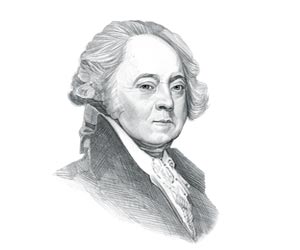|
Second Great Awakening for kids: Background and History of the First Great
Awakening
The
First Great Awakening began in 1725 and
lasted up to 1750 during the Colonial period of American history.
The Great Awakening was sparked by the tour of an English
evangelical minister named George Whitefield. The Great Awakening
included the participation of political factions who wanted to bring
about religious, social, and political changes. The first movements
for social reform began to develop during this era.
What was the
Second Great Awakening?
The Second Great
Awakening was prompted by falling interest in religion when people
were excited about the innovations of the Industrial Revolution and
the rapid expansion of U.S. territories, particularly in the west.
People did not have the time or the inclination for worship.
Exuberant revivalist meetings ignited the interest in religion. The
camp-meetings featured zealous preachers who applied Christian teaching
to the resolution of the social problems of the day. The Second
Great Awakening began in 1800 and was in decline by 1850.
Where and When did the
Second Great Awakening begin?
The Second Great
Awakening began
in 1800 in New England, New York, Kentucky and Tennessee. Most of
the religious revivals in the West occurred as camp meetings and
also served as social gatherings with the opportunity to trade.
Why was the
Second Great Awakening different to the First Great Awakening?
The Second Great
Awakening differed to the first as the focus of the revival meetings
moved from traditional evangelism and conversion, to recruiting
people into different denominations. The aim of reviving faith in
the Christian religion was uppermost, hence the terms 'revival' and
'revivalists', but unlike the First Great Awakening, the Second
Great Awakening not only encompassed the Protestant religion but
also encouraged the participation of Presbyterians, Methodists and
Baptists.
What was the
Purpose of
Second Great Awakening?
The Second Great
Awakening sought to awaken the consciences of people. It sought to
change the beliefs and lifestyles of people by the adoption of
virtues such as temperance, frugality and the ethic of hard work. It
also sought to awaken people to the plight of the less fortunate in
society, such as slaves, convicts and the handicapped, and work to
make their lives better. Many of the preachers believed that the
Gospel not only saved people, but also it was a means to reform
society. The enthusiastic preachers believed that every person could
be saved through revivals.
Second Great Awakening
in the North and the South
The Second Great Awakening spread across both the Northern and
Southern states but there were differences in focus and in
interpretation. In the North, the movement resulted in the creation
of voluntary, reformist societies, which led directly to the
anti-slavery abolitionist movement. In the South, white evangelicals
began to preach that the Bible supported slavery, a notion that was
in the interests of the Slave Plantations. Also refer to the
Fugitive Slave
Act.
Second Great Awakening
and the Slaves
The First Great
Awakening had brought Christianity to the African slaves, the second
brought the message of spiritual equality, a conviction that there
would be deliverance from slavery and a rise in the number of black
preachers. For additional information refer to
Nat Turner's Rebellion.
What were the
Effects of the
Second Great Awakening?
The effects of the
Second Great Awakening included:
-
The Second
Great Awakening enrolled millions of new members to various
religious denominations
-
An
increase in Presbyterians, Baptists, Seventh-day Adventists and
Methodists
-
The
emergence of movements to prohibit alcoholic beverages, to
support rights for women and to further education
-
More women
converted than men
-
The
establishment of Religious schools and Bible study groups
-
A
divergence of religious beliefs between the North and the South
-
Abolitionist (anti-slavery) movements emerged in the North
-
Pro-Slavery movements emerged in the South
-
An
emergence in black Protestantism and the founding of
African-American churches
What was the
Impact of the
Second Great Awakening?
What was the Impact
of the Second Great Awakening? The Second Great Awakening was
extremely important as it led to the establishment of reform
movements to address injustices and alleviate suffering such as the
Temperance Movement, the
Women's
suffrage Movement and the
Abolitionist Movement in
which people advocated for emancipation on religious grounds.
Black
History for kids: Important People and Events
For visitors interested in African American History
refer to
Black History - People and Events.
A useful resource for
teachers, kids, schools and colleges undertaking
projects for the Black History Month. |

